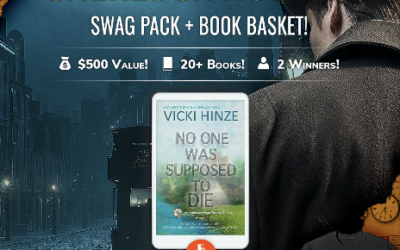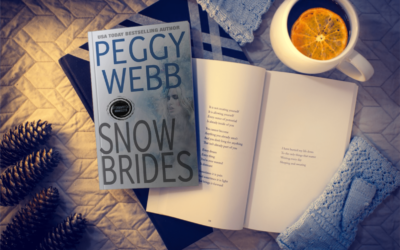Vicki Hinze © 2003-2011
What is the difference between tone and mood?
Tone typically refers to the emotional atmosphere the writer establishes and maintains through the entire novel. One of the easiest ways to peg the tone is to identify the book’s genre, or if it doesn’t have a genre, the overall feel of it.
For example–(remember that I use my own works in examples whenever possible to avoid having to get permissions; it’s quicker)–LADY LIBERTY is a suspense
novel. It has a romantic element, a mystery element, and, further defining it: spy, intrigue, espionage, thriller, and techno-thriller elements.
I’m using it as an example because MOST books have a combination of genre-specific elements. The key to the novel’s tone is in the balance of those elements. Which element dominates the novel? Answer that, and you’ll nail your book’s tone.
In LADY LIBERTY, the suspense is the dominant element. The reason the combination of genres works is because every other element supports and relies on the suspense. You can’t separate the suspense from any of the other elements without leaving a hole, if you will, in the book. Think of it as subsidiary interdependence. Any one non-dominate element in the book disappears and the dominate element in the book has a gap.
That gap can be in logic, motivation, character (establishing, maintaining, or growth), or even in setting. Whatever it is, it’ll leave the book with a foundation missing one of its corners, which means it won’t be able to support the weight of the novel convincingly.
A lot of writers get into trouble by constructing the novel with multiple dominating elements. (Example: suspense and romance elements.) The challenge comes in when the writer gives equal weight to both elements. When that happens, neither element can carry the weight it needs to carry; it can’t because it’s diffused by the other dominate element. So the reader’s attention, interest, and absorption in the story is diffused, torn between the two elements. To correct this, make one element dominant, and make the other element secondary and dependent on the dominant element.
In LADY LIBERTY, the dominant element is the suspense. Will Sybil and Jonathan get the briefcase back to D.C. in time to stop the first-strike launch of a Peacekeeper missile that will start World War III? The secondary element is a romance between Jonathan and Sybil. If they fail in their quest to get to D.C., they–and a lot of other people–are going to die. There won’t be a romance because they won’t survive. See the dependence?
As you are writing, ask yourself how you are reacting emotionally to the work as a whole. Is the book serious, lighthearted, mysterious, gripping, funny? That is the tone of the book.
While experts vary–some use the terms tone, mood, and style interchangeably–the difference I best relate to is that tone references the book as a whole while mood references the characters’ (and thus the readers’) emotional reactions to the events occurring in the scenes of the book, and the emotions aroused in the characters/readers by the overall book.
The mood of the book might be dark when the tone isn’t. I’m thinking of the honeymoon story with Gilda Radner (Saturday ’Nite Live) and Gene Wilder (of
Willy Wonka’s Chocolate Factory fame) in the haunted mansion. I apologize, but the name of the film escapes me at the moment. Maybe, HAUNTED HONEYMOON, or something like that. Anyway, I’m sure you remember the movie. The point is the mood in that movie is deliberately dark and spooky. But the tone is comedy.
The mood shifts and changes from scene to scene to mirror the emotional mood of the point of view character in that scene. (Occasionally a stark contrast is used for impact, but generally, you want the external mood [situation and setting] to mirror the internal mood of the point of view character. It is through this venue that the writer incites the reader to react to novel events as the writer wants the reader to act to those events.
Remember, everything in any scene is filtered through the point of view character’s senses, perceptions, and current emotional status. That is the way it’s related to the reader. (This holds true, even if the point of view character is a narrator not actually present in the scene. Still, the reader experiences the story through the narrator’s perceptions and what that narrator chooses to relate, and chooses not to relate. How much weight or importance that character places on what is being relayed.)
An “imagine” example this time.
Imagine yourself standing before a Christmas tree. The lights are lit. It’s Christmas Eve. The family is all home. It’s warm and fuzzy and you’re sipping a little eggnog, staring into the lights dreaming and thinking sometimes life is just so good.
Now imagine yourself in that same setting. Only there is no family. You came home from work and your spouse had taken the kids and left you a note. They’re not coming back.
Same setting, and you might drink eggnog and stare into the lights but you won’t likely be dreaming. More likely you’ll be dazed, shocked, and wondering what happened. Then you’ll be angry. I seriously doubt you’re going to be thinking life is good. More likely, you’re going to be thinking sometimes life really sucks.
Unless…
You intensely dislike your family and you’re glad they’re gone. Then you might feel relieved and dreaming of a bright future without them, and thinking life is really good.
Unless…
It dawns on you that you’re going to lose half your assets and income to child support for the next decade or so and you’re going to have to sell the house and move into a dumpy apartment and maybe your family wasn’t so bad after all, and from now on you won’t know whether they’re good or bad because you won’t know where they are. You won’t see the kids graduate from high school, get married. There’ll be no more Christmas dinners with everyone gathered around and you’ll die old and alone.
Those are extreme examples but I wanted to show you how the mood changes not
only scene-to-scene but within the scene. It happens as a direct result of what is happening to the point of view character and his/her emotional state at that moment.
Now, notice, the tone didn’t change. It stayed consistent. The scene didn’t change. The concrete anchors (details noted in the scene) remained constant. What altered was the character’s emotional reaction to them.
The mood of the scene was altered internally, by the point of view character’s emotional mood at that moment.
Often to pack that extra punch, the writer will take those same details and change them to enhance the mood.
Example: In the “warm fuzzy” setting, the character is staring at the lights, dreaming. In the “family’s left” setting, the writer might have the character note that one of those lights–or one string of those lights–have gone out. The light being snuffed out is indicative of the character’s mood. Part of him/her has been snuffed out. So s/he doesn’t notice the gazillion bright lights. S/he notices the absence of light. (Darkness carries depressed/negative connotations.)
This is the difference in tone and mood. As I said, some experts use the terms interchangeably, so watch for that when you’re studying craft and make sure you know which they’re really referencing so the difference between them doesn’t get jumbled in your mind.




